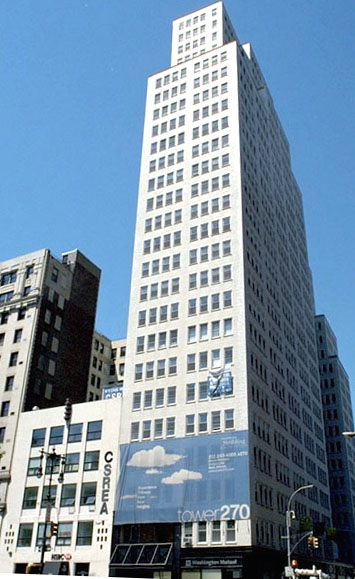A surprising number of New York City offices, laboratories, and warehouses were involved in the top-secret project. While these New York City sites remain largely unmarked and unknown, they were a small but crucial part of the success of the Manhattan Project, and deserve to remembered.
The name itself, “Manhattan Project,” is commonly thought to be a misnomer. But the first offices of the Manhattan Project were actually in Manhattan, at 270 Broadway. General Leslie Groves decided to follow the custom of naming Corps of Engineers districts for the city in which they are located. Thus the atomic bomb project became known as the Manhattan Engineer District (MED) or “Manhattan Project.” The title had the additional benefit of masking the actual purpose of the top-secret project.
First Headquarters of the MED
The name initially proposed for the project was the “Laboratory for the Development of Substitute Materials.” Worried that it revealed too much about the project’s intentions, General Groves preferred the “Manhattan Engineer District” (MED), named after the location of its initial offices.The first headquarters of the Manhattan Engineers District was located in what is now the Arthur Levitt State Office Building. In 1942, the 18th floor of the building was the headquarters of the North Atlantic Division of the Army Corps of Engineers. This building became the project’s first headquarters in mid-June of 1942. In August 1943, the headquarters were shifted to Oak Ridge, TN.
While 270 Broadway’s most notable contribution to the Manhattan Project was serving as its first headquarters, Stone & Webster, a Boston-based engineering firm, also had offices in the building. Stone & Webster was tasked with building the Y-12 electromagnetic separation plant to produce enriched uranium. This method was one of the three different approaches pursued at the Oak Ridge, TN site.




